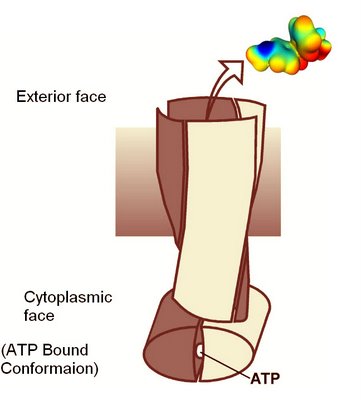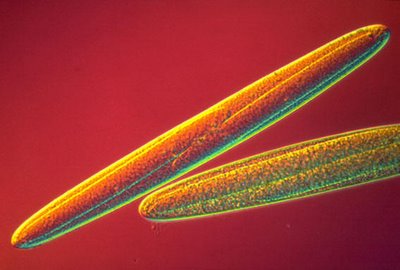A question of cycles of oxidation in mineral leaching.
Question from student (edited):
Regarding acid mine drainage, does the oxidation of sulfides to H2SO4 result in the release of the metal ions which get leached out (eg, the release of Fe2+ from FeS2)? Does the H2SO4 that is produced cause the leaching out of other metals from their ores because of its acidic nature? Can the microorganisms also oxidise the S2- in the FeS2 in addition to oxidising the Fe2+ that is produced from this reaction?
Answer (from Pundit's Environmental Expert Jan Pundit):
Initially, the H2SO4 formed by microorganisms helps to solubilise metals released from the ores. They oxidise the S2- (in the metal sulfides) to produce the H2SO4, which helps to stabilise Fe2+ (which oxidises in air under neutral or alkaline conditions), and keeps Fe3+ in solution, which would otherwise react with water to produce ferric oxy-hydroxides (rust) at neutral and alkaline pH. Once the system is acidic, and there is a high concentration of Fe3+, then the propagation cycle becomes important. There is direct chemical oxidation of the sulfides in the ores, by Fe3+, to produce more H2SO4, and releasing more (reduced) metal ions, and the Fe3+ is chemically reduced to Fe2+. The bacteria are now important for the biological reoxidation of Fe2+ to Fe3+, which is required to keep the chemical oxidation going.
Regarding acid mine drainage, does the oxidation of sulfides to H2SO4 result in the release of the metal ions which get leached out (eg, the release of Fe2+ from FeS2)? Does the H2SO4 that is produced cause the leaching out of other metals from their ores because of its acidic nature? Can the microorganisms also oxidise the S2- in the FeS2 in addition to oxidising the Fe2+ that is produced from this reaction?
Answer (from Pundit's Environmental Expert Jan Pundit):
Initially, the H2SO4 formed by microorganisms helps to solubilise metals released from the ores. They oxidise the S2- (in the metal sulfides) to produce the H2SO4, which helps to stabilise Fe2+ (which oxidises in air under neutral or alkaline conditions), and keeps Fe3+ in solution, which would otherwise react with water to produce ferric oxy-hydroxides (rust) at neutral and alkaline pH. Once the system is acidic, and there is a high concentration of Fe3+, then the propagation cycle becomes important. There is direct chemical oxidation of the sulfides in the ores, by Fe3+, to produce more H2SO4, and releasing more (reduced) metal ions, and the Fe3+ is chemically reduced to Fe2+. The bacteria are now important for the biological reoxidation of Fe2+ to Fe3+, which is required to keep the chemical oxidation going.
Labels: environment, Innovation, physiology, Questions



